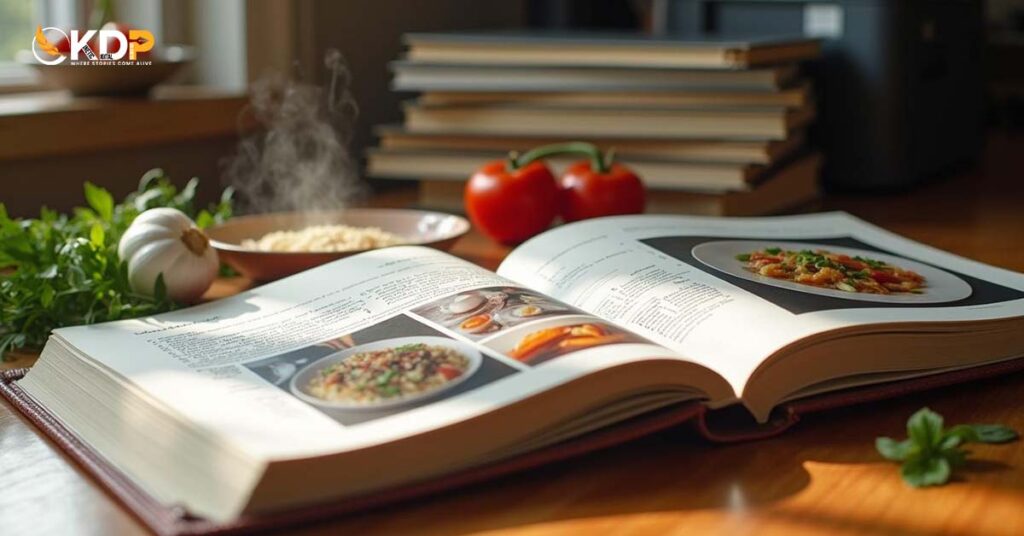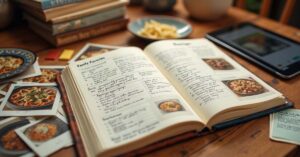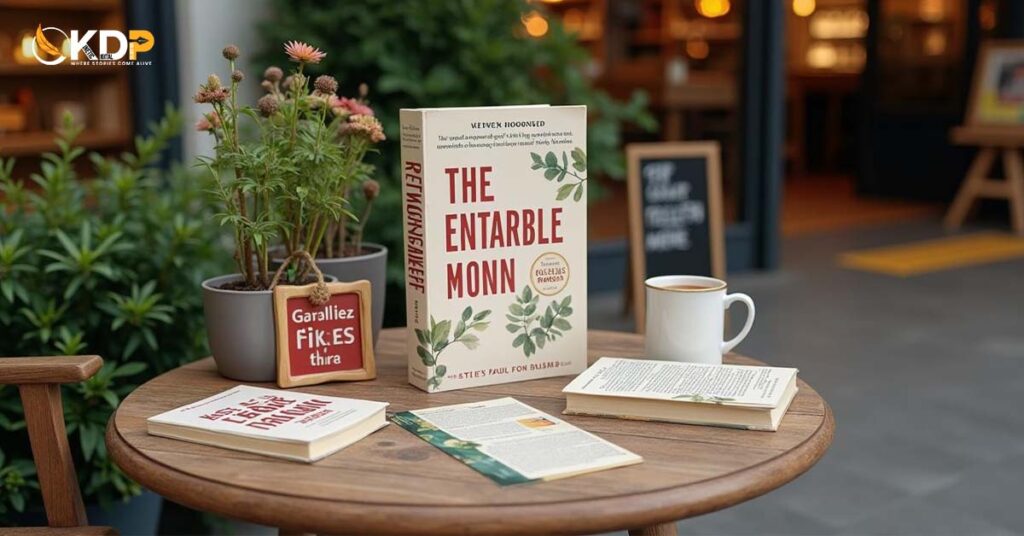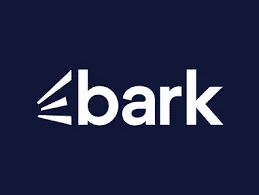Want to Print Your Own Cookbook?
After having to spend years on perfecting family recipes, scribbling ingredient lists on napkins, and snapping photos of your mouthwatering meals, you’re finally ready to take your next big step by sharing your culinary creations with the world but then obviously, we have to be a little realistic too by asking ourselves whether cook book printing can be heavy on our wallets while being overwhelming and risky…especially when you’re not sure how many people will actually buy your book.
Have you just started dreaming of being a published food author? You can do it without upfront costs or piles of unsold inventory! If yes, then this is your moment to finally achieve your dream of publishing a print-on-demand cookbook, and it’s not that hard. In this blog, we’ll help you learn how to:
- Start with a Solid Plan
- Choose the Right Printing and Binding Style
- Get It Out Into the World
Decide on a Theme and the Recipes to Match
Before you dive into measurements, ingredients, and cooking instructions, you’ve got to answer one big question: What’s your cookbook really about?
Every memorable cookbook has a clear theme. Whether it’s cozy comfort food, weeknight dinners on a budget, gluten-free baking, or nostalgic family recipes, that central idea gives your book structure and soul. Without a theme, your cookbook can feel like a random pile of recipes. With one? It feels like a curated experience.
Take a step back and look at what you already have. If you’ve been sharing recipes on a blog or social media, chances are you’ve already built up quite the collection. Scroll through your archives, and see what patterns pop out. Are your most popular posts all dessert-related? Do your readers love your quick lunch ideas or one-pan dinners? That right there might be your cookbook’s foundation.
EGather a collection of beloved family recipes or personal favorites. This theme isn’t about chasing trends; it’s about forging connections. Choose what resonates with you and share it with your audience. When passion breathes life into each dish, that’s where the magic happens. Let your story stir the pot and simmer in their hearts.
Build Your Recipe List
Once you’ve locked in your theme, it’s time to start gathering your recipes. Aim for 30 to 40 that clearly fit your chosen concept. This gives you enough content to deliver value to readers without overwhelming them.
Feel free to sprinkle in a splash of supporting recipes. These additions can turn up the flavor, both literally and figuratively! If your cookbook spotlights simple dinners, don’t shy away from dessert or drink options. After all, who can resist a sweet ending or a refreshing sip? Embrace these delightful pairings to create a well-rounded meal experience.. The goal is to give readers a full experience without straying too far from your main focus.
Don’t Forget the Extra Content
Your cookbook is not just a recipe collection; it’s a reading experience. A short intro adds personality and shows your passion. Perhaps your love for baking blossomed in your grandmother’s warm kitchen. Or, maybe you crafted this collection to assist busy parents in whipping up dinner swiftly. Whatever your story is, share it.
Then, add in the must-haves:
- Copyright Page – Include your name, the year, and any rights information.
- Table of Contents – Helps readers easily find what they are looking for.
- Ingredient Index – Especially helpful if you are using niche or seasonal ingredients.
- Conversion Tables or Glossary (optional) – A great bonus if you’re catering to beginners or international audiences.
This supportive content forms the backbone of your cookbook. It adds structure and helps it shine as a professional-quality gem. With every word, your culinary masterpiece will rise above the rest.
A cookbook is not just a bunch of recipes. It shows your kitchen, your tastes, and your story. Plan ahead to create a beautiful and practical cookbook. Whether it’s a gift for loved ones or for a wider audience, this step is key.
Before you plunge headfirst into the world of design, take a pause. A rock-solid plan is your lifebuoy, ensuring everything stays afloat. Crafting your content’s structure and visualizing the layout are essential; this is where the magic begins. This pivotal phase sets the rhythm for your entire project’s symphony.
Step One: Organize Your Recipes with Purpose
Once your theme is nailed down, start sorting your recipes. This step is often overlooked, but trust me, it matters. You’re not just stacking meals in random order; you’re curating an experience.
Here are a few ways to organize your recipes:
- By course (appetizers, mains, desserts)
- By season (spring, summer, fall, winter)
- By occasion (weeknight dinners, holiday feasts, quick lunches)
- By difficulty level (beginner-friendly, intermediate, advanced)
Pick an approach that fits your style and makes sense for your readers. And remember, if you plan to market your cooking book, this structure also helps buyers immediately understand what your cookbook offers.
Once you’ve sorted your list, decide how many recipes you want to include. For most first-time authors, 30–40 recipes is a manageable and satisfying range. You can always expand in future editions or spin-offs. One of the beauties of a print-on-demand cookbook is how easy it is to scale.
Step Two: Design Recipe Pages with Consistency in Mind
Now comes the fun (and visual) part, designing your cookbook. Even with humble tools like Google Docs or Canva, consistency is key. A uniform layout for each recipe transforms your print-on-demand cookbook from simple to stunning. It doesn’t just polish your pages; it showcases your professionalism. A cohesive design invites readers to dive in and savor every bite.ssional feel, but it also makes your content easier to follow for your readers.
Here’s what to consider:
- Font styles and sizes – Opt for a reader-friendly typeface, particularly for ingredient lists and instructions.
- Section layout – Craft each recipe page’s design: title, introduction, ingredients, steps, tips, and perhaps room for notes.
- Image placement – Will you include a photo with every recipe? Or maybe a full-page or half-page? Whatever you choose, ensure a consistent format.
- White space – Don’t crowd your pages. Leave room to breathe so your cookbook feels accessible, not overwhelming.
Start with a template. Many online tools provide free or cheap cookbook templates. If you’re feeling ambitious, you can also create your own from scratch.
The layout you choose should serve both form and function. Think about how your reader will actually use the book. A home cook flipping through your pasta section doesn’t want to decipher cluttered formatting while elbows-deep in sauce.
Choose the Right Print Format
Your design decisions should also align with how you plan to print. For instance, if you want your cookbook to lie flat while someone’s cooking, a spiral-bound edition is ideal. On the other hand, if your cookbook is meant to be a gift or keepsake, a hardcover might be the best fit; it gives the book a more substantial, premium feel.
That’s where print-on-demand cookbook services shine. In the world of publishing, platforms like Amazon KDP, Lulu, and IngramSpark reign supreme. They let you offer an array of formats without the burden of bulk printing. One reader wants a spiral-bound kitchen guide. Another prefers a softcover book for their shelf. With these resources, you can meet every preference, all while keeping your inventory woes at bay.
This flexibility is also perfect for self-publishers trying to market a cooking book to different audiences. Some readers want functionality, others want aesthetics. With print-on-demand, you don’t have to choose.
Designing the Look and Feel of Your Cookbook
Before you jump into fonts and cover mockups, here’s a tip: take a trip to your bookshelf, or better yet, your local bookstore. Flip through some actual cookbooks and pay attention to what grabs your eye. You’ll notice that most aren’t shaped like novels. They are usually bigger, often in hardcover. They look more like photo books than regular reading material.
Why? Because layout and presentation matter just as much as the recipes themselves.
As you’re flipping through pages, take mental (or physical) notes:
- Which layouts feel easy to follow?
- Do you like full-page recipe photos or smaller images?
- How do they group sections, by meals, ingredients, or seasons?
- Is the vibe more minimal and modern, or colorful and rustic?
These small details can guide your own layout decisions and help you visualize what kind of aesthetic suits your recipes best. Design matters a lot when you publish a family recipe book or market your cookbook. It affects how readers will view your work.
Keep Your Buyers in Mind
If you’re creating a print-on-demand cookbook with plans to sell it, don’t just think about what looks good to you. Think about who will be buying it. Is your cookbook geared toward beginner home cooks? Then your design should be simple, accessible, and not too cluttered. Is it a gourmet collection for experienced foodies? Go ahead and lean into elegant fonts and high-end visuals.
The cover, in particular, is a huge deal. It’s the first thing people see, especially if you’re selling online. A strong cover design can draw someone in instantly, while a weak one might get passed over, even if your recipes are top-tier. So, think about color schemes, fonts, and imagery that align with your theme and will grab attention on digital platforms like Amazon or Etsy.
Use a Template, It’ll Save You Hours (and Headaches)
Unless you’re a design whiz, crafting a complete cookbook can feel daunting. Enter the cookbook template, your secret weapon in this culinary crusade. It offers a sturdy framework to elevate your pages, ensuring they remain consistent, tidy, and ready for print.
The internet brims with a bounty of free and premium templates, many designed precisely for cookbook printing. Seek out templates that dance well with design tools like Adobe InDesign, Canva, or Affinity Publisher. Even print-on-demand platforms often present their own delightful options.
Pro Tip: Design for Function and Beauty
Don’t just chase a trendy design; instead, build something your readers can actually cook from. Think about things like:
- Font readability – Make sure your ingredient lists and instructions are easy to scan, even from a kitchen counter.
- Spacing – Avoid cramming too much text on a page. Leave room for notes if your readers want to scribble.
- Photo placement – Use consistent positioning for images to give your cookbook a clean, uniform look.
The best cookbooks are those that people grab repeatedly. It’s not just about the food; it’s also about enjoying the experience of using the book.
Picking the Right Binding for Your Book
After perfecting your layout and recipes, don’t forget this vital aspect: the physical makeup of your cookbook. Yes, we’re diving into the world of paper quality, ink selection, and binding choices. Each element plays a key role! Crafting your culinary companion with care transforms pages into a feast for the eyes.
Whether you’re crafting a gift-worthy cookbook or marketing a culinary treasure, binding matters; your choice can spice up usability, enhance appearance, and influence cost. Make every page a delight, showcasing your recipes in style! Let’s get into it!
Don’t Skimp on Quality
Before we even get into bindings, let’s talk about what your pages will look and feel like.
Even if you’re producing a simple black-and-white print-on-demand cookbook, quality still matters. Opting for premium ink and thick, luxurious paper transforms readability. Dark, crisp text dances on smooth, durable stock, creating not just clarity but elegance. In the chaotic kitchen realm, it withstands spills and smudges, maintaining its professional allure.
If you want vibrant food photos, choose high-resolution color printing. Also, use a coated or satin finish for the best results. It’ll make your recipes stand out and your images sparkle. This is great if you plan to print and sell your cookbook in stores or online.
Understanding What Works Best for Cookbooks
Now let’s talk about how your pages stay together. Different bindings serve different purposes, and when it comes to cookbook printing, not all options are created equal, especially when your readers will be flipping pages with flour-covered fingers.
Here are the most common cookbook binding types, explained in plain language:
Hardcover Binding
A hardcover cookbook is all about impact. Picture those exquisite cookbooks gracing gourmet kitchen stores and trendy gift shops. They’re sturdy treasures, visually captivating, and built to last a lifetime. This binding style wraps strong boards in a striking cover. It gives a polished look to showcase your cooking skills.
Paperback Binding
Paperbacks are the most common choice for traditional books, and for good reason. They’re less expensive to produce, lightweight, and widely accepted by distributors and print-on-demand services alike. If you’re trying to market your cooking book on a tight budget, a paperback might be the way to go.
Spiral or Coil Binding
If your readers are actually going to cook with your book propped up on the counter, coil binding is the MVP. Spiral binding lets the pages lie flat or fold back. This makes it easier to follow recipes. It’s the most user-friendly option for practical, everyday cookbooks. The only doA twist of fate: spiral-bound cookbooks often can’t reach global shelves like Amazon. They really shine on your website, at events, or in the Lulu Bookstore. Perfect for personalized sales, they offer an intimate connection with every buyer.
Marketing Your Cookbook the Right Way
Your print-on-demand cookbook is ready to shine! Dive into a dazzling collection of your finest recipes, each one a visual treat. This book tempts you with tasty photos and a cover that says, “Open me.” It’s a feast for the senses. Here’s where the real journey begins: sparking interest in readers. Guide them to discover your culinary gems. Turn those tempting pages into tasty sales.
Yep, even after all that recipe testing and formatting, the work isn’t quite over. To get your cookbook into more kitchens, you need a smart marketing plan. This plan should focus on reaching the right audience.
Offer Bonuses and Build Hype
One of the cleverest tricks to spotlight your print-on-demand cookbook is to offer a delightful bonus! Everyone enjoys a surprise treat, especially when supporting independent creators like you. Give them something extra, and watch their enthusiasm bubble over!
Here are some creative ideas:
- Bonus download – A mini eBook with a few extra recipes
- Printable meal planner – Something simple and useful
- Behind-the-scenes video – A short clip showing your process
- Discount for email signups – Build your list while making sales
These bonuses can be great incentives when you launch. They help build momentum.
Don’t Forget Local and Niche Opportunities
While the internet is a goldmine, don’t ignore local or community-based promotions.
Print-on-demand transforms your book dreams into a tangible reality. No need for hefty bulk orders, just professional-quality copies at your fingertips! With this service, you can confidently approach local bookstores, charming boutiques, and vibrant farmers’ markets.
You may be surprised to discover that your biggest fans often live just down the street.
Wrapping It Up
You’ve picked your theme and gathered delectable recipes. You’ve polished every detail, added enchanting photos, and crafted supporting content. This is a rock-solid foundation for your cookbook. It’s especially vital when venturing into self-publishing with print-on-demand platforms.
By putting in the effort upfront, you’ll save yourself a ton of time (and headaches) later on. You’ll also end up with a cookbook that not only looks good but feels cohesive, useful, and market-ready. Planning is key. It turns a bunch of recipes into a book that friends, family, and a wider audience will enjoy. So, take your time with this stage.




















